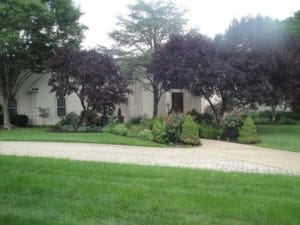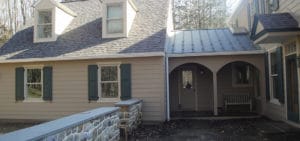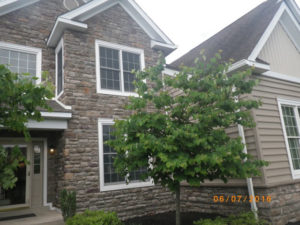
Whether you’re on the market for a new home or looking to renovate your current residence, you’ve no doubt heard about the material stucco. One of the most common materials used for home exteriors, stucco is widely used across the country due to its durability and unique appearance. As stucco is not the only option for materials used for your home exterior, you may be wondering: how does stucco work? In this brief guide, we’ll explain everything you need to know about stucco and the pros and cons of using it as the material of choice for your home.
What is Stucco Made Of, and How Does Stucco Work?
In its most basic form, stucco is a mixture of cement, lime, and sand. It is applied to the exterior of homes in a wet form and quickly dries to a hardened material that can last up to fifty years with proper maintenance and care. While most commonly used on exteriors of homes and buildings, stucco is also quite common on interior walls as well due to its unique and aesthetically pleasing appearance. When applied on the exterior of a home, typically stucco is applied over a wire mesh to help ensure the mixture sets appropriately on your home.
While often used interchangeably with “plaster,” it’s important to note that both are slightly different due to their unique chemical compositions.
The Pros and Cons of Stucco
Like all materials, stucco does have its pros and cons. First and foremost, stucco is incredibly durable and can last for decades when cared for properly. Secondly, stucco makes it easy to change the look of the material with a few coats of paint, making it an excellent option for those who prefer flexibility in the appearance of their home. Relatively speaking, stucco is also quite affordable compared to other materials. Because it has a long shelf life, investing in stucco can often save you money in the long term.
Of course, stucco isn’t without its issues. While durable with proper care, stucco does require maintenance on a regular basis to repair potential cracks that may occur due to settling of the foundation of your home. Additionally, depending on the climate, stucco can retain moisture, which can ultimately lead to mold. However, with routine upkeep and inspections, this issue can usually be handled without any major problems.
Ultimately, stucco can be a great material to use on the interior and exterior of your home. If you need assistance installing or repairing stucco, be sure to give us a call! We have a team of dedicated experts waiting to assist you with all your stucco needs.











Leave a Reply